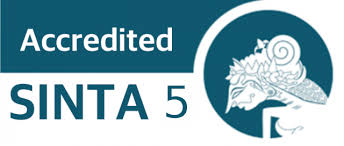Investigating The Fifth Semester Students Ability of Stmik Pelita Nusantara In Toefl
DOI:
https://doi.org/10.55338/jumin.v2i2.696Keywords:
student’s ability, TOEFL, testAbstract
The objectives of this descriptive qualitative study were (1) to find out the student’s ability in TOEFL and (2) to identify the TOEFL sub skills which were required in the improvement. Twenty three students of class MI V Reguler and Executive Class in STMIK Pelita Nusantara Lubuk Pakam were conducted as participants. To examine students’ TOEFL scores, a paper-based TOEFL test was used. The test scores were used to find out the students’ ability at the beginning of the study. Then, the results were analyzed to identify the students’ problem in sub-skills of TOEFL. The data were identified and sub-skill was identified based on Phillips (2003). The findings of the study showed that: (1) the fifth semester students’ ability of STMIK Pelita Nusantara in doing TOEFL test is at Poor level with the most dominant score is below 400, consists of 21 students in that level with 91.30%. Then, there were only a few students, 2 persons with the percentage 8.69%. (2) the fifth semester students’ of STMIK Pelita Nusantara Nusantara is considered as the most difficult for them with the avarage of 5.28 is the listening, while reading section is considered as the easiest one for the fifth semester students of STMIK Pelita Nusantara, with the average of 6.94. Based on the findings, it can be concluded that overall all of the students in this study required further training to improve their TOEFL scores; therefore, it recommended the development of module and training plans according to the outcomes of this analysis study.
Downloads
References
A. O. Weking and E. T Wea, “Laporan Sistem Pakar Diagnosa Penyakit Ikan Lele Dengan Metode Forward Chaining Dan Certainty Factor”, SAINTEK, vol. 3, no. 1, pp. 24-27, Mar. 2019.
A. S. Sitio and F. A. Sianturi, “Implementasi Metode Certainty Factor dalam Mengetahui Kerusakan Sepeda Motor Type Injeksi”, SAINTEK, vol. 3, no. 1, pp. 1-7, Sep. 2021.
D. E. Br.Purba and R. M. Simanjorang, “Sistem Pakar Diagnosa Gangguan Pencernaan Pada Manusia Menggunakan Metode Certainty Factor”, SAINTEK, vol. 3, no. 2, pp. 36-42, Jan. 2022.
F. A. Sianturi, M. Kumari, and E. Laian, “Implementasi Algortima C4.5 Menentukan Pola Berangkatan Jamaah Haji”, SAINTEK, vol. 3, no. 2, pp. 66-70, Mar. 2022.
F. Gulo and F. A. Sianturi, “Analisa Perbandingan Metode Saw Dengan Ahp Dalama Pelihan Supervisor Pada The Batik Hotel”, SAINTEK, vol. 3, no. 2, pp. 43-50, Jan. 2022.
I. T. Mawaddah and S. Sulindawaty, “Sistem Pakar Mendiagnosa Penyakit Tropik Infeksi Dengan Menggunakan Metode Certainty Factor (CF)”, SAINTEK, vol. 3, no. 2, pp. 52-59, Jan. 2022.
M. F. Sinaga, S. P. Locha Surbakti, T. M. F. Zalukhu, and M. D. Batubara, “Analisis Sistem Dan Pengembangan Sistem Informasi Penerimaan Siswa Baru Tingkat SMA Berbasis Web Online Dengan Metode Kualitatif ”, SAINTEK, vol. 3, no. 1, pp. 8-16, Sep. 2021.
M. R. Wijaya and D. N. Willim D.U, “Implementasi Metode Forward Chaining Sistem Pakar Untuk Diagnosis Penyakit Pada Perokok”, SAINTEK, vol. 3, no. 1, pp. 28-30, Feb. 2022.
R. Purba and F. A. Sianturi, “Penerapan Algoritma C.45 Dalam Mengukur Tingkat Kepuasan Pengunjung Hotel”, SAINTEK, vol. 3, no. 1, pp. 17-23, Sep. 2021.
S. Wahyuni and P. M. Hasugian, “Sistem Pakar Mendiagnosa Penyakit Ayam Kampung Menggunakan Metode Certainty Factor”, SAINTEK, vol. 3, no. 2, pp. 60-65, Jan. 2022.
W. Wati and F. A. Sianturi, “Implementasi Metode Topsis Dalam Merekomendasikan Pestisida Terbaik Pada Tanaman Padi Di Desa Rumbia”, SAINTEK, vol. 3, no. 2, pp. 31-35, Jan. 2022.
Downloads
Published
How to Cite
Issue
Section
License
Copyright (c) 2021 Jurnal Media Informatika

This work is licensed under a Creative Commons Attribution 4.0 International License.

 Ersika Puspita Dani,
STMIK Pelita Nusantara,
Indonesia
Ersika Puspita Dani,
STMIK Pelita Nusantara,
Indonesia 










